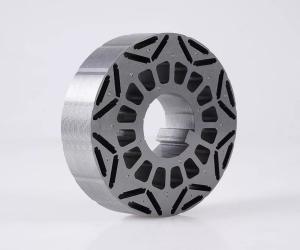
Silicon steel is a fundamental material in transformer cores. It serves as the core component that determines many aspects of a transformer's functionality and performance.
Silicon steel exhibits high magnetic permeability. This property allows it to conduct magnetic flux effectively. In a transformer, it ensures that the magnetic field generated by the primary winding can be smoothly transferred to the secondary winding. For instance, it enables the transformer to step up or step down voltages precisely according to the design requirements. Moreover, its low magnetic hysteresis loss means that less energy is dissipated as heat during the alternating magnetization process. This contributes to the overall energy efficiency of the transformer, reducing power wastage and operating costs.
Another significant aspect is the reduction of eddy current losses. Silicon steel has a relatively high resistivity. When it is fabricated into thin sheets and laminated with insulating layers between them, the eddy current paths are restricted. This effectively minimizes the eddy current losses that could otherwise lead to overheating and decreased efficiency of the transformer. By reducing these losses, silicon steel helps maintain the stable operation of the transformer and prolongs its service life.

The silicon content in silicon steel is carefully controlled. An appropriate silicon content not only enhances the magnetic properties but also affects the material's mechanical characteristics. The processing of silicon steel involves techniques like cold rolling. Cold-rolled silicon steel sheets possess better surface quality and dimensional accuracy. Insulation coating is also a crucial step. It provides the necessary electrical isolation between the laminations, which is essential for minimizing eddy current losses. The thickness and uniformity of the insulation layer directly impact the transformer's performance.
The structure of the transformer core made of silicon steel is designed with great care. Different lamination patterns, such as the E-I or circular core designs, are used to optimize the magnetic flux distribution. The joints between the laminations are engineered to reduce magnetic resistance and prevent magnetic leakage. A well-designed core structure ensures that the magnetic field lines are as continuous and uniform as possible, maximizing the transformer's efficiency and performance.
Vector control of variable frequency transformer
2023-10-14What are the design features of modern stainless steel screens?
2022-07-28Process of Stainless Steel Embossed Tube
2021-07-31Electrical steel sheet annealing process
2023-09-20What are the differences between cold rolled steel and hot rolled steel
2023-11-10Surface condition of stainless steel plate
2021-09-09






